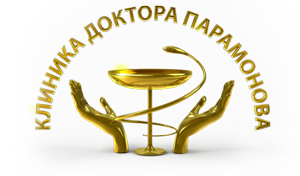
Magnetic resonance imaging is
-
the most precise method of examination applied to most organs and systems of the human body
-
an absolutely safe examination method
-
the most intuitive method of examining human vessels without contrast agent injection
-
the most effective method of examining human brain and spinal chord as well as endocrine system oncological disease foci detection at an early stage, precise involvement location positioning for their complete removal, and treatment efficiency evaluation during post-surgery period or after chemo- or radiotherapy
Magnetic resonance imaging (MRI or NMRI) takes a special place among the achievements of modern medical science and technology. This diagnostic method is most informative and, in most cases, absolutely safe (unlike X-ray methods and spiral computer assisted tomography).
At Dr Paramonov’s clinic, examinations are conducted using Siemens Magnetom AVANTO 1.5 Tl magnetic resonance imaging scanner, which is the most modern system of this type in Saratov region. Magnetic resonance imaging is the “gold standard” in diagnostics. Our clinic employs the specialists, V. A. Panyukov and Ye. V. Redchenko, doctors who have large experience in working with MRI (12 years each) and diagnosing different diseases.
Nuclear magnetic resonance imaging and magnetic resonance imaging are the same method. The name of the method has been shortened to avoid confusing patients by using the word “nuclear”. A magnetic resonance scanner action principle is based on nuclear magnetic resonance, a complex physical process – the ability of hydrogen nuclei (protons in them) to respond to a very strong magnetic field (ten thousand times stronger than that of the Earth) and radio waves. The signals emitted during the process are detected by special sensors (antennas or, as they are commonly called in Russian – “coils”) and then analyzed by complex computer software.
Because healthy and affected tissues differ in their structure and emit different signals after absorbing radio waves in a strong magnetic field, a computer analyzes them, produces an image output on the screen, and the specialist can detect pathological changes in human body, which assists in early diagnostics of different diseases.
It is believed that a magnetic resonance scanner shows better tissue differentiation in building layer-by-layer and 3D images which is much more informative than X-ray, computer assisted tomography or ultrasonic examination. In addition to that, it doesn’t affect the system with radiation or ultrasonic stress because radio waves used during this kind of tomography are similar to those used in a standard radio receiver.
The invention history of this method belongs to the 1970’s, although already in 1944 an American physicist Isidor Isaac Rabi was awarded the Nobel Prize "for his resonance method for recording the magnetic properties of atomic nuclei".
In 1952, American physicists Edward M. Purcell and Felix Bloch were awarded the Nobel Prize "for their development of new methods for nuclear magnetic precision measurements and discoveries in connection therewith".
MRI is used to diagnose changes in:
-
musculoskeletal system
-
joints
-
brain and spinal chord
-
internal organs, etc.
It is important that this method is able to reveal a disease at an early stage, find an anomaly which needs immediate treatment or surgical intervention.
Modern equipment used in MRI diagnostics enables us to:
-
obtain precise visuals of internal organs and tissues
-
get necessary data on cerebrospinal fluid circulation
-
observe gas exchange taking place in the tissues
MRI is distinguished from other diagnostic methods by following traits:
-
it is efficient and safe
-
no additional devices need to be inserted into the system and no contrast fluids need to be injected (in some cases, a contrast agent is needed to define the nature of certain changes more precisely, for example, to distinguish between a benign and a malignant tumor)
-
the procedure has become more available recently and is used in diagnosing most serious diseases which require detailed examination of processes in the patient’s system
What you need to know if you are undergoing the examination
The diagnostics is conducted in the following way. The patient is inserted into the apparatus in a horizontal position, then the device creates a magnetic field and the patient’s body is influenced by radio waves. That’s why you shouldn’t have a mobile phone, a credit card, a watch on your body, and your clothes shouldn’t contain metal objects.
No nutritional restrictions are necessary before the examination (except for abdominal cavity organs examination). The whole process takes 10-30 minutes. There are no side effects. The procedure is absolutely painless.
MRI has absolute contraindications for patients with heart pacers because such devices are adjusted using magnetic fields, and their adjustments are lost if they are put inside a magnetic field.
A relative contraindication is when cardiovascular stents or brain blood vessel clips are used – the examination is possible if a patient produces a certificate stating that these devices can withstand an MRI scanning with magnetic field of 1.5 Tl intensity.
MRI also has contraindications for patients having big metal fragments or prostheses made of magnetic materials in their body. Dentures do not prevent this examination from being performed.
The decisions about conducting the examination on patients with superficially located small fragments and non-magnetic or slightly magnetic joint prostheses outside the expected examination area are taken individually in each separate case.
It is not recommended to perform an MRI scan in case of claustrophobia, its use during pregnancy is restricted (it is advised against during the first trimester of the pregnancy) but in case of vital indications the examination can be performed after consulting a gynecologist.
Magnetic resonance imaging at Dr Paramonov’s clinic guarantees the most precise diagnostics and timely detection of dangerous processes in the organism as well as treatment efficiency evaluation.
You can book an MRI scan in Saratov by calling 8(8452)660303.
Our specialist
-
Specialization
Any- Any

